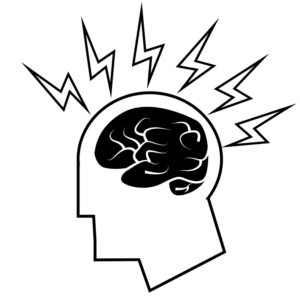When we think of pain, injury and illness come to mind. But nerve pain is different. The causes, experiences, and treatment of nerve pain are distinct from the familiar pain resulting from skinned knees or headaches. Nerve pain can be confusing and can have serious negative impacts on your well-being and quality of life, especially when it persists for a long time. Understanding what is nerve pain can be the first step to getting relief from this disruptive and unpleasant condition.
What is Nociceptive Pain?
Pain caused by an injury to the body is known as nociceptive pain. The minor of a stubbed toe or the massive pain of a broken leg all fall under the heading of nociceptive pain. Pain from an illness is usually nociceptive pain as well, such as the pain of swollen sinus tissues caused by allergies or a raw throat caused by coughing.
Damage to the body’s tissues is sensed by somatosensory nerves in the body’s skin, muscles, and other organs. Somatosensory nerves send these signals to the brain, which perceives them as pain. When the damage to the body is healed, the nerves stop sending pain signals. Nociceptive pain serves the important function of letting us know when something is wrong with our body and taking steps to protect it, whether that means taking a hand off a hot surface or drinking warm tea to soothe a sore throat.
What is Nerve Pain?
Unlike nociceptive pain, nerve pain is not a signal from the nerves that the body has undergone damage. Nerve pain is caused by problems with the somatosensory nerves themselves, which causes them to send unneeded messages of pain to the brain. Because these messages do not reflect a real injury to the body’s tissues, resolving nerve pain is a lot harder than simply taking your hand off that hot stove or healing your skinned knee.
Nerve pain is also known as:
- neuropathic pain
- neuralgia
What Does Nerve Pain Feel Like?
Nerve pain can take on various forms, and is frequently associated with other symptoms. Many patients with nerve pain experience:
- burning or coldness
- tingling or “pins and needles”
- numbness
- itching
- stabbing pain
- sensation of electric shocks
Many people with nerve pain also experience dysesthesia, sensations like pressure or movement in the absence of a stimulus that would cause those sensations. Many other people with nerve pain have allodynia, pain resulting from a stimulus that would not normally be painful, such as a light touch.
Neuropathic pain can be felt anywhere in the body, but it most common in the back and legs. It’s important to note that you can have both nociceptive pain and neuropathic pain together at the same time. Some conditions can result in damage to the body’s tissues (resulting in nociceptive pain) and damage to the nerves themselves (resulting in neuropathic pain). Needless to say, experiencing both kinds of pain together, and treating both, presents a more serious challenge than either type alone.
Nerve pain also causes other health problems. Intermittent and chronic pain can disturb your sleep, provoke anxiety or depression, disrupt your concentration, and make healthy activities like eating well or exercising difficult.
Who Experiences Nerve Pain?
People of all demographics can experience nerve pain. A survey of the incidence of neuropathy in the vernal population found that about 7-8% of people have experienced nerve pain. Some 5% experience severe nerve pain, and neuropathic pain accounts for about 20- 25% of individuals living with chronic pain. Neuropathy is more common in adults aged 60 and up, and is more common in women than in men.
What Causes Nerve Pain?
While all nerve pain results from damage to the somatosensory nerves, how that comes about can differ widely. Some conditions that cause neuralgia are quire rare, while others are surprisingly common. Conditions that can result in neuropathic pain include:
- Multiple sclerosis
- Carpal tunnel syndrome
- Spinal cord injury
- Stroke
- Nutritional deficiency
- Trigeminal neuralgia
- Atypical facial pain
- Postherpetic neuralgia (pain after recovering from shingles)
- HIV infection
- Alcoholism
- Diabetic neuropathy
- Phantom limb (pain following amputation)
- Pain following chemotherapy
- Cancer
How is Nerve Pain Treated?
The usual treatment for routine pain is very straightforward: “take two aspirin and get some rest.” Treatment for nociceptive pain involves healing the underlying injury or illness, and by easing pain sensations with drugs like anti-inflammatory painkillers, paracetamol, and codeine or morphine for short-term severe pain.
Traditional painkillers like those listed above do not usually work well to relieve neuropathic pain. Nerve pain does usually lessen in response to other drugs: antidepressant or anti-epileptic medications. Interestingly, the method of action of these drugs on nerve pain is different from their method of action on the conditions they were created to treat. The most commonly prescribed of these are:
- Pregabalin
- Gabapentin
- Duloxetine
- Venlafaxine
- Milnacipran
- Amitriptyline
- Nortriptyline
- Desipramine
Other medical treatments for nerve pain include:
- botulinum toxin (Botox) injections
- alpha lipoic acid (ALA) injections
- lidocaine and other local anesthetics
- nerve blocks
- B12 supplements
- acupuncture
Many patients try more than one treatment for neuropathic pain before finding the right treatment. Patients may also use more than one method to treat their nerve pain. Treating the underlying condition, such as diabetes or cancer, can also help relieve neuropathic pain or stop it from worsening.

